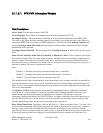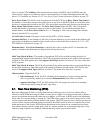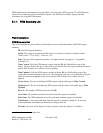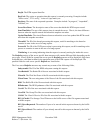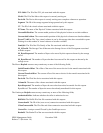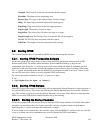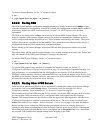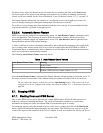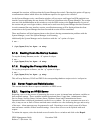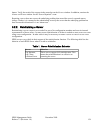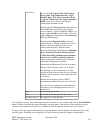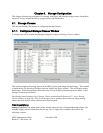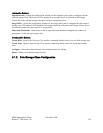
To start a server, select the desired server(s) from the Servers window and click on the Start button.
Verify the result of the request in the message area on the Servers window. In addition, monitor the
Alarms and Events window for the “Server Initialized” event. Reference Section 5.2.2.3: on page 151.
The Startup Daemon allows only one instance of a configured server to be brought up at a time. If a
server is already running, the subsequent startup request for that server will fail.
To be able to receive alarms and events associated with the server start up, it is recommended that the
Log Daemon and all Log Clients be brought up first.
5.2.2.4. Automatic Server Restart
HPSS servers may be configured to automatically restart. An Auto Restart Count is contained in each
server configuration. This count may be used to define the number of times a failed server will be
automatically restarted without any administrative action. The Auto Restart Count is ignored for the
Startup Daemon and the SSM System Manager.
A failure is defined as a server terminating abnormally, and an abnormal termination is the result of the
server exiting with a nonzero return code or as a result of a signal other than SIGTERM or SIGKILL.
Termination due to an administrative halt or shutdown is not considered to be an abnormal termination
and a server will not be automatically restarted.
The following Auto Restart Count values may be set:
Table 1. Auto Restart Count Values
Auto Restart Count Value Meaning
0 Do not restart
-1 Infinite restart attempts
n
Restart a failed server n times (where n is > 0)
After the Auto Restart Count is exhausted, the Startup Daemon will not attempt to restart the server. If
the server executes for more than 1 hour without failing, the number of failures will be set back to 0.
Do not confuse this feature with the Core Server Auto Startup feature. This feature can be set
using the Core Server Configuration window described in Section 5.1.1.1: Execution Controls on
page 90.
5.1. Stopping HPSS
5.1.1. Shutting Down an HPSS Server
One or more HPSS servers can be shut down in a single SSM request. SSM will send each server a
request to perform a controlled shut down. The server will attempt to complete its current tasks,
discontinue accepting new tasks, and inform SSM of its termination prior to exiting.
To initiate the request, select the desired server(s) on the Servers window and click on the Shut Down
button. SSM will confirm the request through a pop-up window. The SSM user may wish to verify the
result of the request in the status bar on the Servers window as well as to monitor the Alarms and Events
HPSS Management Guide November 2009
Release 7.3 (Revision 1.0) 151



